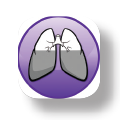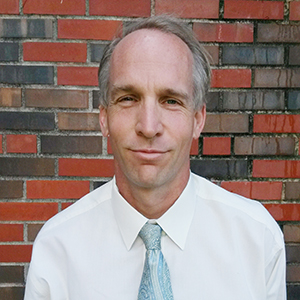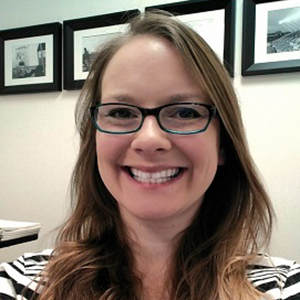Portia Stewart // Fall 2015
Tips to achieving work-life balance in today’s multitasking, tech-driven world.

But it helps me stay productive, you say. Are you sure? It keeps me connected with my spouse, my kids, my friends. How often are you sitting next to another real live person when you’re texting someone else? I can work anywhere. Is that a good thing?
If you’re like most people, you’re quelling the instinct to check your smartphone. Perhaps it sits next to you, its blank screen calling you to email. Leave it there, just a few more minutes.
I double dog dare you to see if you can make it a little longer.
Where does work happen?
Over the past 10 years there’s been an increase in access to work — being able to do your work from home, either through mobile devices or remotely accessing your computer. People are often using cell phones more than landlines when they connect at work.
“One could argue that it’s a cultural shift, given the new technological world we live in and how businesses have evolved — it poses new challenges for people from the traditional ways folks have had separateness,” says Larry Long (Ph.D. ’97), senior director of Counseling and Education Support at the University of Kansas Hospital in Kansas City, Kan. “Because prior to cell phones, people were taking briefcases home with materials at best, and you wouldn’t necessarily have your email so readily accessible or have people so readily call you on your cell phone.”
Recent research shows multitasking only really works — sort of — when one of the actions you’re performing is something you can do by rote memory — for example, walking and talking. If both tasks require thinking, you’re probably losing productivity. (Or at least, you’re not performing to the best of your ability.)
Long, who often counsels medical students and residents, says people in demanding fields have a high expectation of accessibility. The people who manage most successfully, Long says, take actions to delineate, or try to draw boundaries between work and home life.
“While I know my staff has the ability to remotely log into their computers, they’re only supposed to do that if they’re sick and they’ve got clients or student patients coming in later that day and there’s no one to greet them when they arrive, so they can make some kind of a contact that way.
“The evolution I’ve seen over time is that people have to draw new or different kinds of boundaries. And work cultures and bosses are trying to figure it out too, because the company might demand or encourage that you have access and be available. And it depends on the lines that you draw and the lines that the company draws,” Long says.
While some individuals create boundaries for work, others look to technology for a solution. You can automate some of your information streams and feeds so you can be more selective about what gets your attention. Setting rules and filters in your email program can help separate urgent work items, updates from the PTA and the email ad from the local big box store. They aren’t deleted, just saved in convenient folders so you can read through the sorted materials at your leisure without distractions.
High stakes, high pressure

Cathy Spong (M.D. ’91) is deputy director of the Eunice Kennedy Shriver National Institute of Child Health and Human Development as well as a mother of four children ranging in ages from 23 months to 16 years of age. Her husband, an engineer, stays home to support their family and offer flexibility.
“I think it’s very important that when I’m at home or with my kids I do the best I can to unplug and focus on them and what they’re doing,” Spong says. “Then again, I’m a physician, and when you’re on call, you’re on call. So you’ve got to have the phone with you, and if it rings you have to be able to answer and be available to talk with them about whatever issue has arisen.”
She says she balances by trying not to do things that don’t need to be done when her children are with her. For example, if responding to an email can wait until her children are in bed, she’ll wait. And she says she does appreciate how technology helps her stay connected to her 16-year-old daughter.
“I have always aimed to incorporate my family into my career,” Spong says. “For example when I travel I prefer to take at least one of my children with me. Often I have family members — my parents and mother-in-law — who are willing to travel with us. This has the added bonus of more grandparent time, too. I think it is helpful for them to understand my career and, in doing so, the balance is not an issue.”
She’s also found that by embracing her own balance, she’s inspired others to find solutions that work for them.
“Weeks after one of my children was born I went to give a series of lectures and keynote presentation at a university,” Spong says. “The invitation had been offered and accepted over a year earlier, prior to my becoming pregnant. Without giving a second thought, I went to the meeting with my child knowing I had a colleague in the area who could help me if needed.
“Several months later a faculty member at this university told me how I had ‘shaken things up’ and how appreciative she was. I had no idea I was being a role model, but I understand this helped the women faculty at that university,” she says.
Spong says working parents shouldn’t juggle their life by what other people define as successful, appropriate or right.
“You have to do what’s right for yourself and your family and not worry if someone else thinks that’s a good thing or doesn’t think that’s a good thing,” she says. “If you don’t have your family incorporated in your life, you miss out on a lot.”
Controlling the messaging stream
For Chandra Clark (B.L.A. ’06), email is her primary means of communication. As the career and alumni coordinator for the Kauffman Scholars program through the Ewing Marion Kauffman Foundation, Clark finds herself tied to her email in an effort to talk with students, especially with postsecondary students who are at different universities and colleges across the country.
The locations of the students she works with and the time zones they’re operating under means she often doesn’t have a traditional 8-to-5 job.
“Because I love what I do, it seems like I’m constantly connected with either my work cell phone or my iPad. Once you work with these students, you form personal relationships, so it’s hard to turn it on and turn it off. It’s definitely something I work hard to find balance with,” Clark says.
A single mother of a 14-year-old daughter, Clark says she constantly balances being her daughter’s primary caregiver — watching her grades, making sure she has a social life and meeting her emotional needs — and the career she loves.
To set boundaries, Clark says she’s been learning to turn off. She says it’s easy to go to your phone or email when you’re feeling overwhelmed and focus on those first. So sometimes she chooses certain times to be screen-free.
She also chooses to go on what she calls a “Facebook fast” — an experience she describes as detoxing from the perspectives and branding that can happen on social media outlets.
“If you’re finding your life’s not what you want it to be, it can be difficult to go on social media and see what other people are posting, because it seems like everybody is doing better than you are. It’s important to take that time to detox.”
Clark’s job involves helping students find jobs and build careers, and she says the process of job seeking — especially when you’re unemployed — can take a toll on self-esteem. So she encourages self-care and encourages setting boundaries, and depending on the kind of work you do, this can be a challenge.
“You bring your whole person into your career, and it’s hard sometimes to differentiate how much you need to care for yourself,” Clark says.
One person’s idea of success won’t be the same as the next person’s idea of success, she says.
Family first
For some, multitasking has become an addiction. But for Cynthia Marie Thompson (Ph.D. ’14), director of public services at UMKC’s Miller Nichols Library, finding balance — focusing on her husband and children without distractions at home and creating distraction-free focus time at work — rank high in her values. Her family includes her husband, a 6-year-old son and a 1-year-old daughter.
Thompson was recently invited to an all-day work retreat that she knew would be a good career growth opportunity on the same day her son’s school had scheduled a field trip. She weighed her decision on the impact her decision would have in both categories of her life.
“While my mantra is family first, sometimes you need to look at the opportunities and what’s most important in that particular case. And in this case, I get lots of opportunities to go on field trips and this wasn’t one where my son expected me to go,” Thompson says.
Knowing the retreat was a rare opportunity and that she could enjoy another field trip with her son, she chose to attend the work retreat.
Thompson says it’s key to set up realistic expectations for yourself. One of the big things she says she learned when she made the decision to have a career and children was to let go of the idea that she would have a Pinterest-perfect life.
“I love my job and my family, and I think they’re both awesome and nothing is perfect,” she says.
“My house is a mess, my desk is disorganized and I sometimes miss a deadline. It’s not perfect. But everything as a whole is moving forward in a good way.”
To create balance she chooses to focus on the positives and honesty. She says many of us choose to publicly project an image of perfection, and this can set up unrealistic expectations for ourselves — and even feelings of failure.
Joe Seabrooks (Ph.D. ’01), president of Metropolitan Community College Penn Valley
in Kansas City, Mo., is married with two boys, ages 11 and seven. He embraces technology to connect with his extended family. The ringing of FaceTime when his nieces and
nephew want to video chat is a common sound around his house.
“We will probably FaceTime my in-laws twice a week,” Seabrooks says. “There’s something about being able to link the voice and the image that gives you the illusion that you’re actually in the same space.”
To balance family time and the pressures of work, Seabrooks says he sometimes needs to work during family time to meet a project deadline, and he asks for permission and support from his family to honor those professional obligations. In return, he chooses not to spend time surfing the Web or gaming so he can sincerely enjoy his time with his family and they can cherish their moments together.
One of his biggest challenges is managing the assault of messages in his inbox every day. With the flood of messages, it’s a constant challenge to keep the important ones at the top.
“On one hand I think the Internet and email is an amazing invention — it really has cut time out of getting answers and responses. But the consequence has been for me, personally, the quality of my interactions diminishing tremendously,” Seabrooks says. “I’m still that person who likes to write a salutation. I still like to acknowledge people and ask how they’re doing. And that takes a little more time.”
In all things, balance

Long says usually if he’s coaching someone on how to improve their work-life balance or how to manage stress more effectively, he’s helping sensitize them to the cues or signs that they internally experience or that others experience from them that communicate they’re not in a good place.
Long suggests these questions to ponder:
- Can you maintain your current path for the next six months?
- Are you happy? Do you enjoy what you’re doing?
“The sustainability and consistency of being effective in your personal and professional life is usually what’s most palatable versus this idea that you should have a balanced life,” he says.
A multidimensional life might include short- and long-term goals for your personal and professional life.
It’s easy, he says, to get consumed by one dimension of your life and let other areas go. And that’s when you lose other parts of your life — whether you’re letting go of conscious planning for a healthy lifestyle, your work or your family.
One step Long uses to help people sculpt their future is called “the miracle question.” Consider this: If the problem you were struggling with was gone, can you imagine the first signs of relief? How would you know in your day-to-day life that you were on the right track? The miracle question is a type of questioning therapists use to help people imagine a future without the problem causing them stress.
“What would be different in your thinking, your actions in that first week? What would you see as you progressing at your best? These may be the first smallest signs that you’re on the right track,” Long says.
Starting with a “good enough” goal that takes steps in the right direction can help overachievers who feel the need to “go big or go home.”
Instead, goals should be realistic and sustainable, he says, building into a lifestyle.
“When I think of balance I think of finding what’s good enough in each of those arenas to help you have long-term success with your goals and a happy life in the moment as well as when you look into the future,” Long says. “That’s more what I encourage people to shoot for.”
Illustrations by Kerry Meyer | kerrymeyer.com
There’s an app for that!
Wunderlist
Free
To-do list managers help you keep track of things for home, work and everything in between.
MyCalmBeat
Free
Biofeedback devices look at your heart rate variability or pulse. Some also include guided imagery and breathing coaching.
Gratitude Journal 365
Free
Gratitude journaling helps you become aware of and record the experiences you feel grateful for in life.
Headspace
Free
Mindful meditation in the morning or evening can help you to reset and calm your brain.

Career and alumni coordinator for the Kauffman Scholars program through the Ewing Marion Kauffman Foundation

Senior director of Counseling and Education Support at the University of Kansas Hospital in Kansas City, Kan.

President of Metropolitan Community College Penn Valley in Kansas City, Mo.

Deputy director of the Eunice Kennedy Shriver National Institute of Child Health and Human Development

Director of public services at UMKC’s Miller Nichols Library
